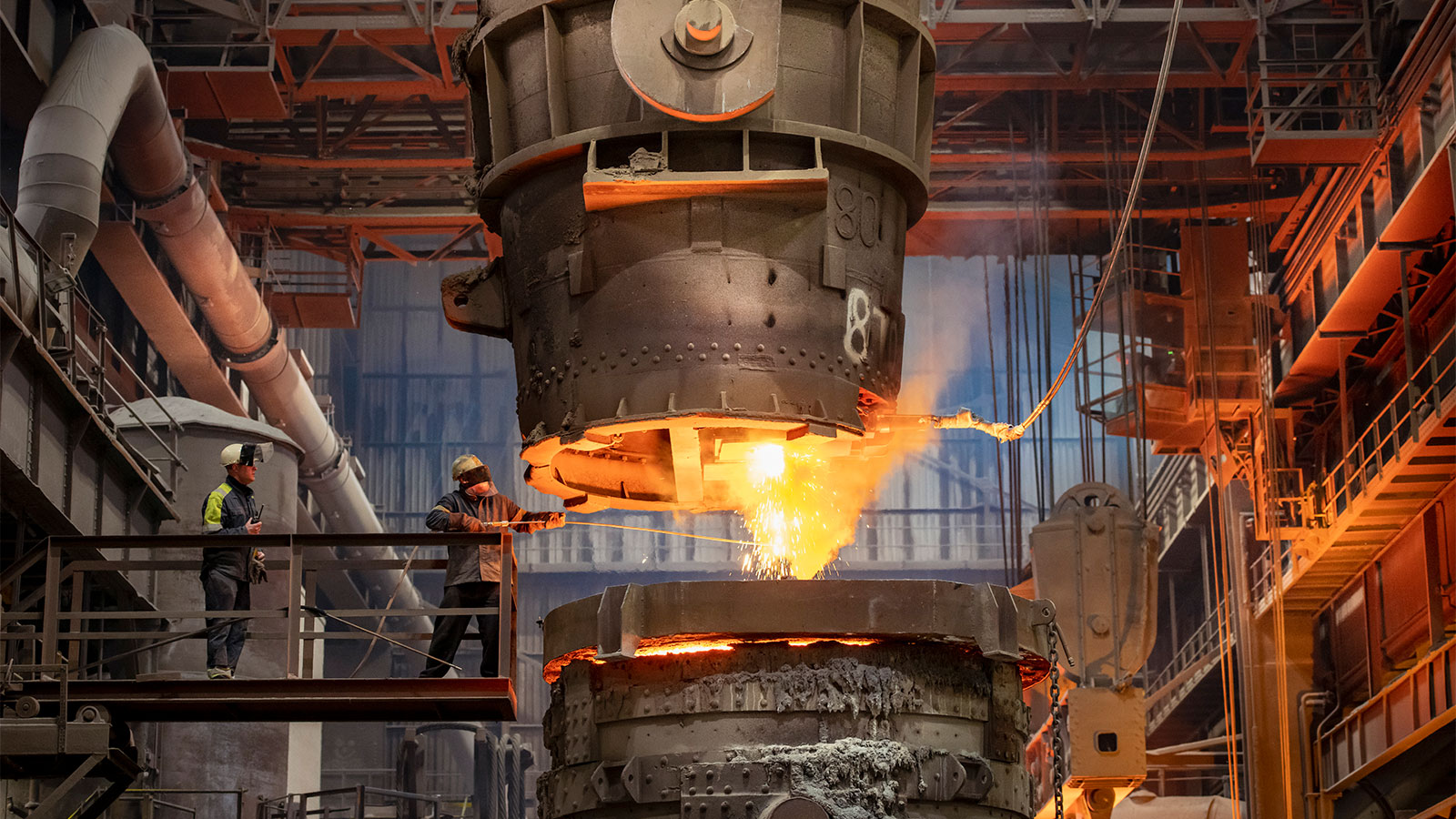The world has now accepted that it must deal with the climate change problem on several fronts, and all building materials are now under a harsher sustainability spotlight than ever before. The steel industry is committed to reaching net-zero steelmaking by 2050 and is already investing heavily in new technologies to decarbonize steelmaking while studying how best and how soon this can be accomplished.
Steel is a key component of modern life. Steel is at the forefront of the ever-growing infrastructure business as one of the most important engineering and building materials. The steel manufacturing sector, on the other hand, is a key contributor to the global climate issue. Due to the use of fossil fuels, primarily coking coal in the production process, it is estimated that just 533 traditional steel facilities throughout the world are responsible for 9% of total carbon dioxide emissions.
Steel’s Golden Age
The world has now accepted that it must deal with the climate change problem on several fronts, and all building materials are now under a harsher sustainability spotlight than ever before. The steel industry is committed to attaining net-zero steelmaking by 2050 and is already spending considerable sums in innovative technologies to decarbonize steelmaking while studying how best and how rapidly decarbonisation can be achieved.
Decarbonised steel buildings will be a reality by the UK’s net-zero carbon goal date of 2050, owing to the coordinated efforts of designers, steelwork contractors, and steel manufacturers in developing both demand and supply side reduction strategies. There will be expenses connected with the change, although steel is considered the cheapest to decarbonize of all the “harder to abate” industries, with a McKinsey analysis estimating average abatement costs of £90 per tonne of steel.
The BCSA Roadmap clearly lays out the path to a decarbonised steel future, with significantly lower emissions by 2030 as a key milestone along the way. As the Roadmap demonstrates, there are several alternatives for decarbonisation, utilising technologies that are either now accessible or in the industrial pilot stage.
Steel’s ambition for a zero-carbon circular future
The importance and function of structural steel in the circular economy are well established. Officials close to Prime Minister Narendra Modi are working with senior bureaucrats and foreign advisers to consider ways to meet the 2050 deadline, according to people familiar with the matter. Today, two manufacturing techniques dominate steel production. Blast furnace-basic oxygen furnace (BF-BOF) manufacturing is the conversion of iron ore to iron and ultimately steel in a process powered by the combustion of coke to produce primary steel. This method produces around 73 percent of all steel, and because the blast furnace accounts for approximately 70 percent of the greenhouse gas emissions connected with steel manufacturing, it is naturally the priority for decarbonisation.

Scrap steel, rather than iron ore, is commonly used as a raw material in the manufacturing of secondary steel in electric arc furnaces (EAFs). Direct reduced iron (DRI) can also be used in EAF production, either alone or in combination with scrap and alloy. This method accounts for approximately 26% of all steel production. The restricted quantity of scrap is the limiting element in growing this. Steel demand from developing nations is increasing, and it can now only be supplied by producing primary steel using the BF-BOF technique. Looking ahead, the steel industry anticipates a period, maybe around the end of the century, when all blast furnaces will be deactivated.
Strategies and technologies
Seeing the potential, India has already announced plans for a National Hydrogen Energy Mission. The country could make some of the world’s cheapest hydrogen by 2050 using ultra-cheap renewable power developed by energy generating companies. The route to net-zero will be a complex one including a combination of various technologies, and the precise mix is likely to alter as technology and related regulations improve.
- Design Efficiency:
The first of the six is to reduce demand for steel through higher design efficiency, which will result in early and considerable carbon savings, and will cut carbon by 17.5 percent by 2050, with the majority of efficiencies reached by 2035. Options for boosting design efficiency are available, due in part to advancements in steel manufacturing such as high strength steels, which allow the same structural function to be performed with less material.
Designers in the past may have been overly conservative, but they now understand how a less conservative approach may result in more efficient designs. Similarly, design loads have been over specified at times, but designers now have and are eager to use the skills to deliver greater material efficiencies – but incentives and targets must be introduced to bring these designs forward, and higher design fees may be required to reflect the additional time required to refine designs for steel efficiency.

- Whole Life impacts:
Steel is widely recognised as having intrinsic strong circular economy benefits, which will result in a 15% carbon reduction by 2050. These advantages are enhanced when due consideration is given to evaluating the whole-life effects and benefits of buildings and the materials used in their construction. The circular economy, in the context of the Roadmap, reduces carbon emissions through demand reduction strategies such as extending building lives and conserving the value of steel products through reuse and recycling.
When quantifying these consequences, a Whole Life Cycle Assessment technique should be used, which takes into account all emissions produced over the whole life of buildings and other structures, from sourcing through construction and use to disposal (cradle to grave).
Conclusion
The energy required in the fabrication shop and related offices, as well as the transport of finished items to site, business travel, and on-site erection activities, account for the majority of the Scope 1 and 2 carbon emissions connected with the fabrication of constructional steelwork. These emissions may be reduced by increasing the use of renewable energy, using the best available manufacturing technology, and using electric power plants and automobiles wherever practicable.
Wind turbines, biomass units, and anaerobic digestion facilities are among the renewable technologies that certain steelwork companies are investing in. Simple ideas like switching to LED lighting, using compressed air leak detection and efficiencies to reduce leaks in compressed air and gas systems, power optimisation, inverters to control the speed of electrical drive motors, and using new generation weld sets are among the technologies used in the fabrication shop. To decrease emissions, several steelwork contractors are investing in hybrid/electric corporate vehicles, maintenance vans, and on-site electric equipment.
Sources:
- Roadmap to decarbonised steel construction
- From concrete to steel, how construction makes up the ‘last mile’ of decarbonization
- Decarbonisation of iron and steel sectors
- IEEFA: India’s technology path key to global steel decarbonisation
- Indian steel sector calls for carbon capture, green procurement to support decarbonization
Disclaimer: The information contained herein have been compiled or arrived at, based upon information obtained in good faith from sources believed to be reliable. The opinions expressed within the content are solely the author’s and can be subject to change. The image featured in this article is only for illustration purposes. If you wish the article to be removed or edited, please send an email to editor@biltrax.com
Discover more from Biltrax Media, A Biltrax Group venture
Subscribe to get the latest posts sent to your email.






















